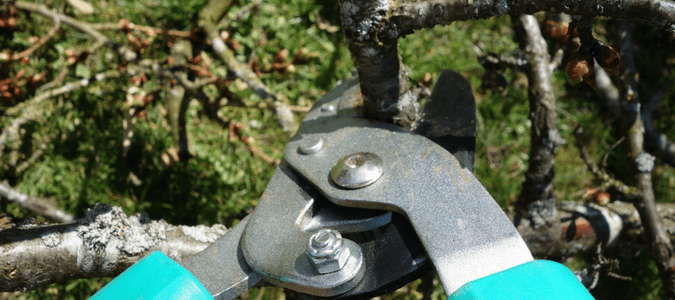
The most valuable part of your home’s landscape is the trees. Healthy, mature shade trees significantly improve a home’s curb appeal and value, and often reduce energy costs.
How To Trim a Tree
In this article, we’ll look at how you can safely trim a tree without causing harm to the tree itself.
Why Should You Prune a Tree?
There are a number of reasons why a homeowner might want to trim trees on their property. Here are a few of the reasons why pruning a tree makes sense:
- Removing dead limbs before they can cause damage to property, people or pets.
- Allowing more sunlight into the yard.
- Preventing rodents and other pests from using branches as a pathway to your roof.
- Eliminating branches that interfere with fencing, structures or other landscaping.
- Creating a better shape or removing erratic growth.
- Removing suckers (new growth) at the base of a tree, which can take energy away from the main trunk and branches.
- Increasing production of fruit trees.
There are a few other things that are good to keep in mind before you begin to trim your trees. First, take a look at your house from the street and identify any branches that come within five feet of your roof that you will want to remove to prevent damage that might take place during and after storms and to make it harder for pests to get onto your roof. Second, you should never trim a tree to keep it short or otherwise contain its size. Topping off trees (especially crape myrtles) also can do irreparable harm, invite disease and decay and shorten their lifespan.
What Kinds of Tools Do You Need?
When trimming a tree, be sure you use the proper tool for the job.
If you’re just cleaning up small branches, you can use hand shears. Use the anvil type (with one cutting edge) for thick branches and dead wood. Use bypass shears (with two cutting edges, like large scissors) for green wood and new growth, as the clean cuts will do less damage to tender plant tissues.
Lopping shears are good for branches up to ¾ inch in diameter (depending on the size of the shears). If you need to remove larger branches, you will need a hand pruning saw, a bow saw or possibly a chainsaw, depending on the size of the limb. For smaller branches beyond your reach, a pole pruner might do the job.
How to Properly Trim Trees
Pruning trees can be challenging, but the good news is that most of the time it’s not even needed.
It’s important to note that whenever you cut a branch, the tree creates special tissue to cover the wound and prevent decay and disease. If you don’t know how to trim a tree properly, you might weaken the tree and it won’t be able to heal itself. So only prune a tree when it’s necessary, and when you do, make sure to do it right.
When you remove a branch, never leave a stub. Professional arborists recommend making cuts ⅛ inch from the branch or trunk rather than flush against the trunk. This is just enough remaining of the branch to allow the tree to heal the cut.
For branches over 3 inches in diameter, start by making a preliminary partial undercut (a notch on the underneath of the branch) 15-18 inches from the trunk. Then cut the branch 5 inches or so further down the branch, away from the trunk. This way as the branch falls, it won’t split the branch or bark past the undercut and removes most of the weight of the branch before you make the final cut. Then you can remove the remaining branch down to the ⅛ inch collar at the trunk.
What is the Best Time to Trim?
A general rule of thumb for most trees is to prune them when they are dormant and right before they start sending out new growth. That means the best time is in late winter.
For most areas of Texas, the ideal time for tree trimming is late January or early February. Pruning at this time will be least stressful to your trees and will stimulate new growth.
What About Live Oaks?
Because of the danger of spreading oak wilt, a deadly fungal disease that affects Texas Red Oaks and Live Oaks, special care must be taken when trimming these trees. Here are some basic tips:
- Winter is the best time to prune oaks because it is the least likely time for the fungus to spread. It can also be done in the hottest times of July and August. Avoid pruning at any other time of the year unless it’s necessary to remove hazardous limbs.
- All cut surfaces must be sealed with wound dressings (which is not usually recommended for other trees).
- Follow good sanitation. Sterilize all pruning tools in a rinse of 10% chlorine bleach and water before and after trimming each tree to avoid spreading any fungal spores.
- All plant debris should be burned, buried, or covered with plastic.
For more information on oak wilt, here’s a fact sheet with more information on the disease, including identifying and treating infected trees.
Leave The Tree Trimming To ABC
Tree trimming can be risky. In between the ladders, tools and expertise needed for the job, you may decide to call in the experts rather than try to do it yourself. If you need a hand trimming your trees, managing your lawn or changing up your landscaping, give ABC Home & Commercial Services a call. We can help you make sure your lawn is ready for spring, and then provide all the maintenance you need throughout the hot summer months. Sit back and relax—ABC has you covered.
